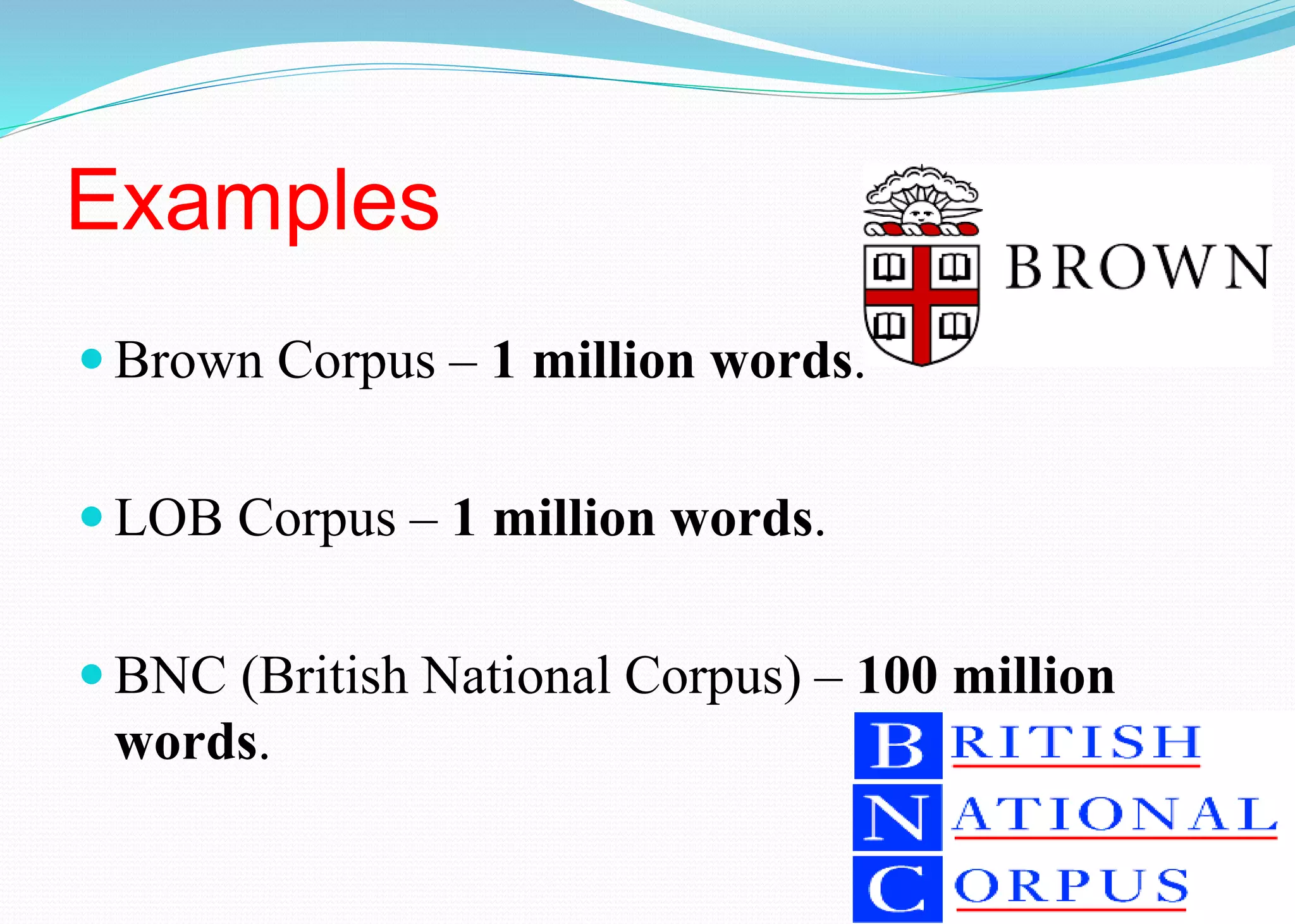The document discusses corpus linguistics and different types of corpora. It defines corpus linguistics as the study of language based on large collections of electronic texts, known as corpora. It describes general corpora, specialized corpora, historical/diachronic corpora, regional corpora, learner corpora, multilingual corpora, comparable corpora, and parallel corpora. It also discusses corpus annotation, concordancing, frequency and keyword lists, collocation, and software used for corpus analysis.

























































